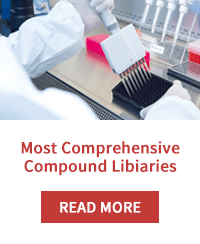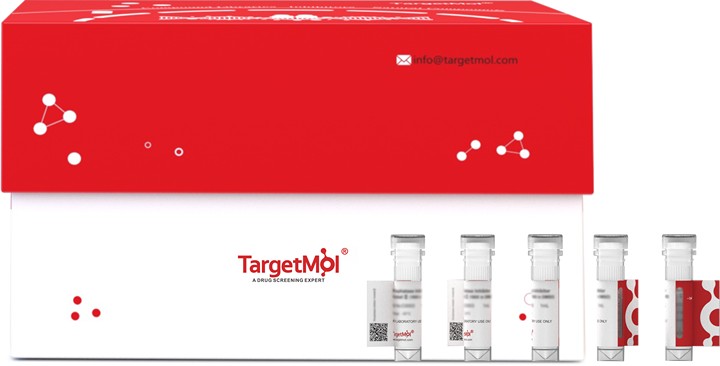

Poliovirus receptor-related 1 (herpesvirus entry mediator C; nectin-1; CD111), also known as PVRL1 is a cell adhesion molecule belonging to the immunoglobulin superfamily that can bind to virion glycoprotein D (gD) to mediate entry of herpes simplex viruses (HSV) and pseudorabies virus (PRV). CD111/Nectin-1/PVRL1 colocalizes with E-cadherin at adherens junctions in epithelial cells. The disruption of cell junctions can result in the redistribution of nectin-1. To determine whether disruption of junctions by calcium depletion influenced the susceptibility of epithelial cells to viral entry, Madin-Darby canine kidney cells expressing endogenous nectin-1 or transfected human nectin-1 were tested for the ability to bind soluble forms of viral gD and to be infected by HSV and PRV, before and after calcium depletion. It has been revealed that binding of HSV and PRV gD was localized to adherens junctions in cells maintained in normal medium but was distributed, along with nectin-1, over the entire cell surface after calcium depletion. Both the binding of gD and the fraction of cells that could be infected by HSV-1 and PRV were enhanced by calcium depletion. Taken together, CD111/Nectin-1/PVRL1 confined to adherens junctions in epithelial cells is not very accessible to virus, whereas dissociation of cell junctions releases nectin-1 to serve more efficiently as an entry recptor.

| Pack Size | Availability | Price/USD | Quantity |
|---|---|---|---|
| 100 μg | 5 days | $ 600.00 | |
| 1 mg | 5 days | $ 3,910.00 |
| Description | Poliovirus receptor-related 1 (herpesvirus entry mediator C; nectin-1; CD111), also known as PVRL1 is a cell adhesion molecule belonging to the immunoglobulin superfamily that can bind to virion glycoprotein D (gD) to mediate entry of herpes simplex viruses (HSV) and pseudorabies virus (PRV). CD111/Nectin-1/PVRL1 colocalizes with E-cadherin at adherens junctions in epithelial cells. The disruption of cell junctions can result in the redistribution of nectin-1. To determine whether disruption of junctions by calcium depletion influenced the susceptibility of epithelial cells to viral entry, Madin-Darby canine kidney cells expressing endogenous nectin-1 or transfected human nectin-1 were tested for the ability to bind soluble forms of viral gD and to be infected by HSV and PRV, before and after calcium depletion. It has been revealed that binding of HSV and PRV gD was localized to adherens junctions in cells maintained in normal medium but was distributed, along with nectin-1, over the entire cell surface after calcium depletion. Both the binding of gD and the fraction of cells that could be infected by HSV-1 and PRV were enhanced by calcium depletion. Taken together, CD111/Nectin-1/PVRL1 confined to adherens junctions in epithelial cells is not very accessible to virus, whereas dissociation of cell junctions releases nectin-1 to serve more efficiently as an entry recptor. |
| Species | Human |
| Expression System | HEK293 |
| Tag | His |
| Accession Number | Q15223-1 |
| Synonyms | HVEC, ED4, PRR1, PVRR1, nectin-1, HIgR, poliovirus receptor-related 1 (herpesvirus entry mediator C), CLPED1, OFC7, PRR, CD111, HV1S, PVRR, SK-12 |
| Construction | A DNA sequence encoding the human PVRL1 isoform 1 (NP_002846.3) extracellular domain (Met 1-Thr 334) was expressed, with a polyhistidine tag at the C-terminus. |
| Protein Purity | > 98 % as determined by SDS-PAGE |
| Molecular Weight | 35.4 kDa (predicted) |
| Endotoxin | < 1.0 EU per μg of the protein as determined by the LAL method |
| Formulation | Lyophilized from sterile PBS, pH 7.4. Please contact us for any concerns or special requirements. Normally 5 % - 8 % trehalose, mannitol and 0. 01% Tween 80 are added as protectants before lyophilization. Please refer to the specific buffer information in the hard copy of CoA. |
| Reconstitution | A hardcopy of datasheet with reconstitution instructions is sent along with the products. Please refer to it for detailed information. |
| Stability & Storage |
Samples are stable for up to twelve months from date of receipt at -20℃ to -80℃. Store it under sterile conditions at -20℃ to -80℃. It is recommended that the protein be aliquoted for optimal storage. Avoid repeated freeze-thaw cycles. |
| Shipping |
In general, recombinant proteins are provided as lyophilized powder which are shipped at ambient temperature.Bulk packages of recombinant proteins are provided as frozen liquid. They are shipped out with blue ice unless customers require otherwise. |
| Research Background | Poliovirus receptor-related 1 (herpesvirus entry mediator C; nectin-1; CD111), also known as PVRL1 is a cell adhesion molecule belonging to the immunoglobulin superfamily that can bind to virion glycoprotein D (gD) to mediate entry of herpes simplex viruses (HSV) and pseudorabies virus (PRV). CD111/Nectin-1/PVRL1 colocalizes with E-cadherin at adherens junctions in epithelial cells. The disruption of cell junctions can result in the redistribution of nectin-1. To determine whether disruption of junctions by calcium depletion influenced the susceptibility of epithelial cells to viral entry, Madin-Darby canine kidney cells expressing endogenous nectin-1 or transfected human nectin-1 were tested for the ability to bind soluble forms of viral gD and to be infected by HSV and PRV, before and after calcium depletion. It has been revealed that binding of HSV and PRV gD was localized to adherens junctions in cells maintained in normal medium but was distributed, along with nectin-1, over the entire cell surface after calcium depletion. Both the binding of gD and the fraction of cells that could be infected by HSV-1 and PRV were enhanced by calcium depletion. Taken together, CD111/Nectin-1/PVRL1 confined to adherens junctions in epithelial cells is not very accessible to virus, whereas dissociation of cell junctions releases nectin-1 to serve more efficiently as an entry recptor. |
bottom
Please read the User Guide of Recombinant Proteins for more specific information.
PVRL1/NECTIN1 Protein, Human, Recombinant (His) HVEC PVRR 1 SK 12 CLPED 1 ED 4 ED4 PVRR-1 PRR1 poliovirus receptor-related 1 PRR 1 PVRR1 PRR-1 OFC-7 ED-4 CD 111 nectin-1 HIgR poliovirus receptor-related 1 (herpesvirus entry mediator C) CLPED1 SK12 OFC7 CLPED-1 PRR CD-111 herpesvirus entry mediator C OFC 7 CD111 HV1S PVRR SK-12 recombinant recombinant-proteins proteins protein
